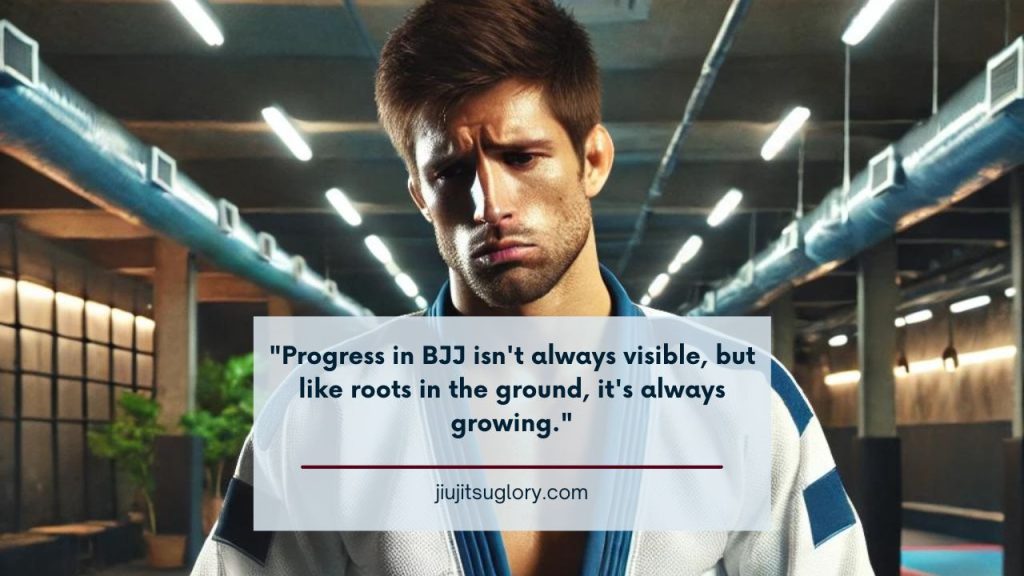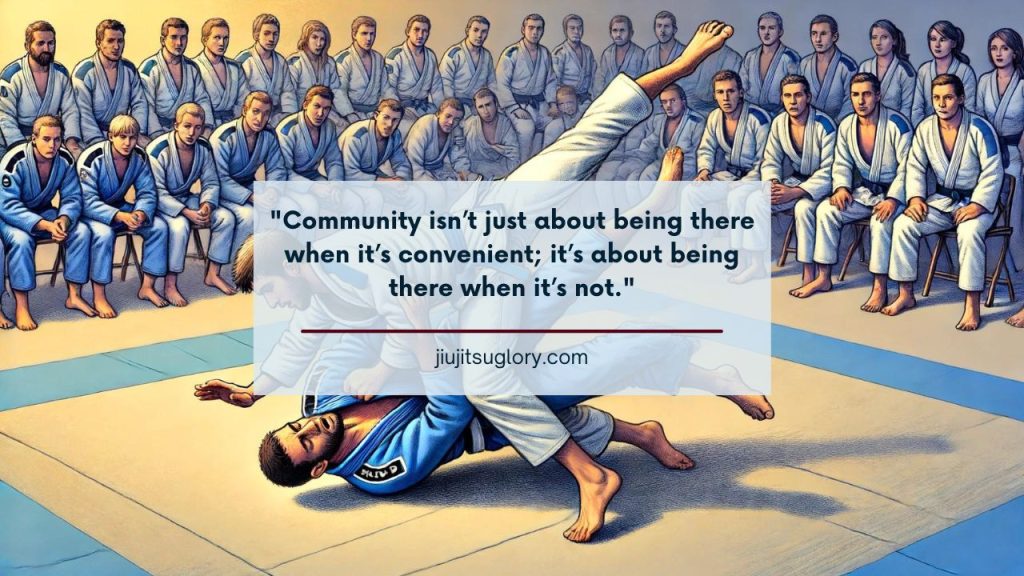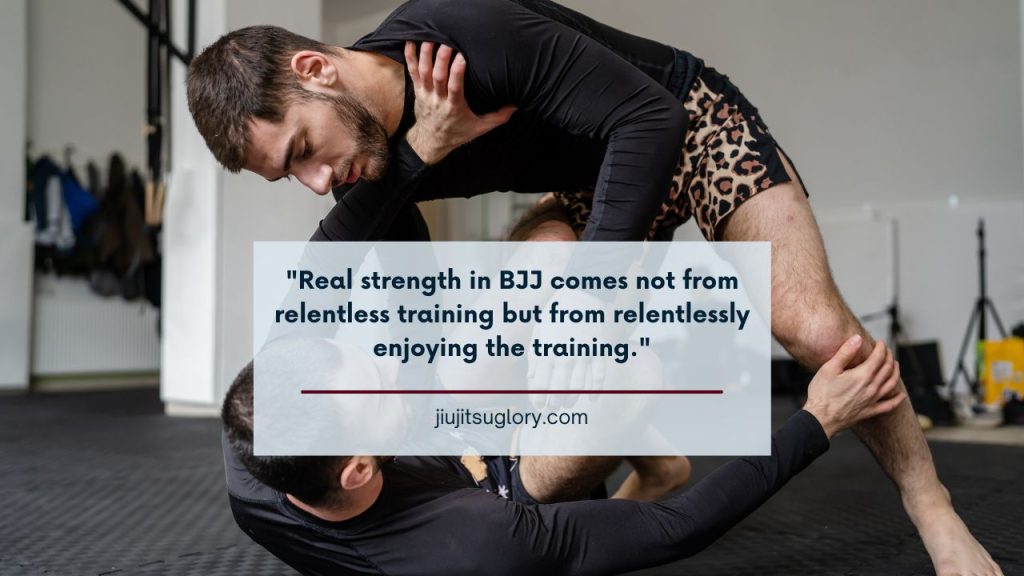Brazilian Jiu-Jitsu is a martial art that challenges the body and mind. Earning a blue belt is a significant milestone, but strangely, many stop training shortly after achieving it.
This article explores why this happens and what can be done to keep blue belts on the mat.
Why Do Blue Belts Quit BJJ?
Earning a blue belt is a significant achievement; however, it’s also a stage where many practitioners decide to hang up their gis.
Below are some of the top reasons blue belts quit Brazilian jiu-jitsu.
The Psychological and Physical Toll

- Transition Challenges: Advancing from white to blue belt means new expectations and challenges, removing the protective label of ‘beginner’. This can feel overwhelming as the comfort of being a novice disappears.
- Physical Demands: The physical intensity of training increases at the blue belt. Practitioners learn more complex techniques, raising the risk of injuries, which can discourage continued participation.
- Mental Strain: The pressure to improve and compete grows, which can be daunting. Slow progress can lead to frustration and doubts about one’s ability, causing some to give up rather than face these challenges.
Plateau in Progress

- Perceived Stagnation: Blue belts often feel their progress stalling. After the rapid advancements as a white belt, the slower pace of improvement can seem discouraging.
- Comparison with Peers: Comparing oneself to others who appear to be improving faster can lead to feelings of inadequacy and disillusionment with the training process.
Time and Financial Commitment

- Training Hours: Juggling BJJ training with personal and professional responsibilities can become too burdensome, especially when training sessions demand significant time investment.
- Costs Involved: The cumulative costs of memberships, gear, and competitions can become a financial burden, prompting some to reconsider their involvement in BJJ.
Cultural and Social Factors

- Gym Environment: A gym’s culture significantly influences a practitioner’s experience. An unwelcoming environment can drive athletes away, while a supportive one can enhance their commitment.
- Lack of Community: A robust and supportive community can be crucial in retaining blue belts. Without it, practitioners may feel isolated and less motivated to continue.
Misalignment of Goals and Reality

- Initial Expectations vs Reality: New practitioners often start with high hopes and enthusiasm, which the harsh realities of the long and challenging path to higher belts can crush.
- Changing Interests: As life progresses, a person’s interests and priorities can shift, leading them to pursue other activities that better align with their evolving lifestyles.
Solutions to BJJ Training High Dropout Rates

- Creating Supportive Environments: Instructors and gym owners should strive to foster a positive and inclusive environment that motivates practitioners to stay engaged.
- Setting Realistic Goals: Helping practitioners set achievable goals can prevent feelings of frustration and ensure a sense of progress and accomplishment.
- Promoting Long-Term Engagement: Keeping training interesting through seminars, guest trainers, and social events can maintain engagement and prevent burnout.
See also: 10 Things I Wish I Knew as a BJJ White Belt
Conclusion
Understanding why blue belts quit BJJ is essential for the community to address these issues effectively.
By fostering a supportive environment, setting achievable goals, and keeping the training engaging, gyms can help ensure that blue belts stay on the mats and continue their journey in Brazilian Jiu-Jitsu.



